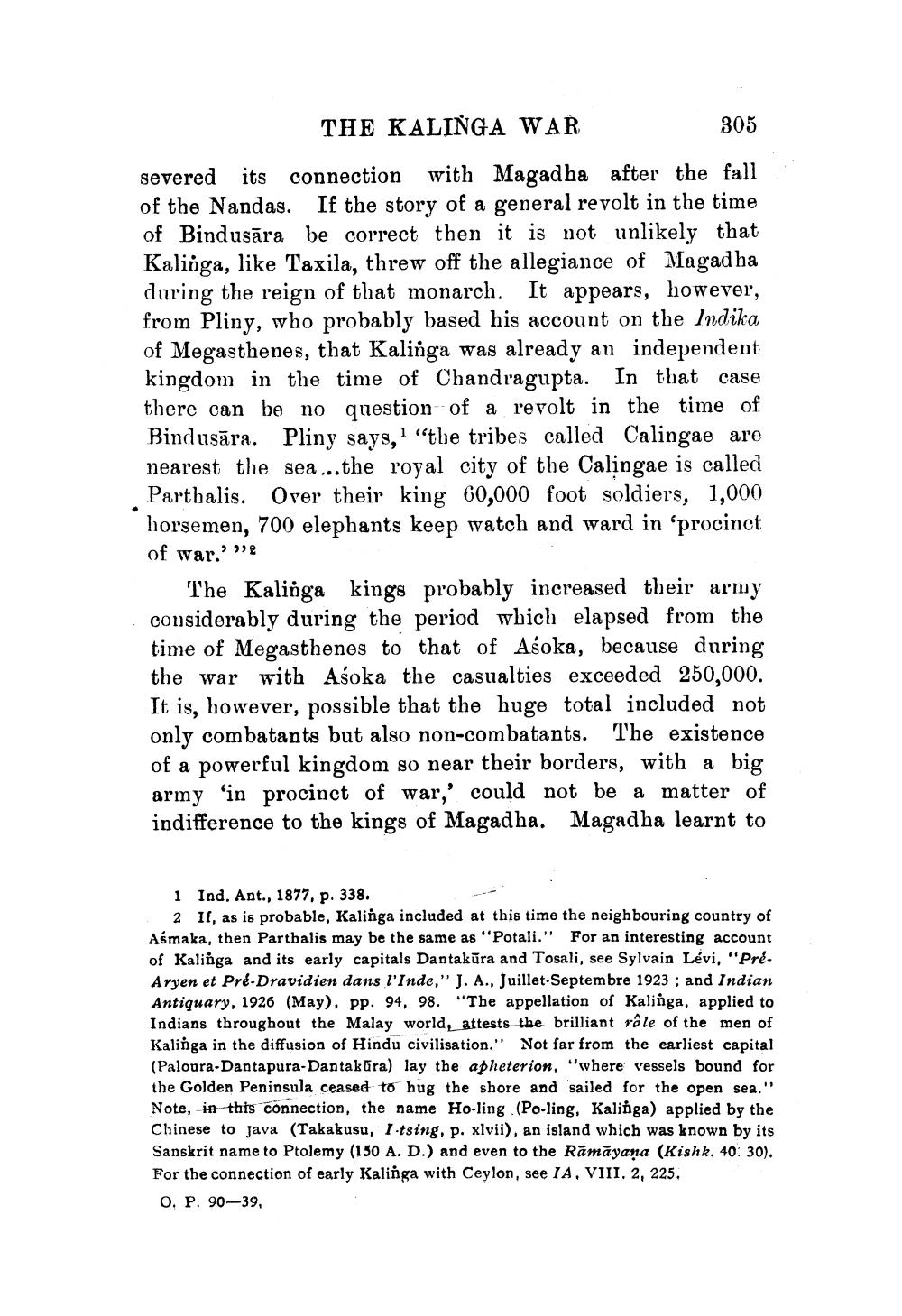________________
THE KALINGA WAR
305
severed its connection with Magadha after the fall of the Nandas. If the story of a general revolt in the time of Bindusāra be correct then it is not unlikely that Kalinga, like Taxila, threw off the allegiance of Magadha during the reign of that monarch. It appears, however, from Pliny, who probably based his account on the Indika of Megasthenes, that Kalinga was already an independent kingdom in the time of Chandragupta. In that case there can be no question of a revolt in the time of Bindusāra. Pliny says, 1 "the tribes called Calingae are nearest the sea ...the royal city of the Calingae is called Parthalis. Over their king 60,000 foot soldiers, 1,000 horsemen, 700 elephants keep watch and ward in ‘procinct of war.""
The Kalinga kings probably increased their army considerably during the period which elapsed from the time of Megasthenes to that of Asoka, because during the war with Aśoka the casualties exceeded 250,000. It is, however, possible that the huge total included not only combatants but also non-combatants. The existence of a powerful kingdom so near their borders, with a big army'in procinct of war,' could not be a matter of indifference to the kings of Magadha. Magadha learnt to
1 Ind. Ant., 1877, p. 338.
2 If, as is probable, Kalinga included at this time the neighbouring country of Asmaka, then Parthalis may be the same as "Potali." For an interesting account of Kalinga and its early capitals Dantakūra and Tosali, see Sylvain Lévi, "PréAryen et Pré-Dravidien dans l'Inde," J. A., Juillet-Septembre 1923; and Indian Antiquary, 1926 (May), pp. 94, 98. "The appellation of Kalinga, applied to Indians throughout the Malay world, attests the brilliant role of the men of Kalinga in the diffusion of Hindu civilisation." Not far from the earliest capital (Paloura-Dantapura-Dantakūra) lay the apheterion, "where vessels bound for the Golden Peninsula ceased to hug the shore and sailed for the open sea." Note, in this connection, the name Ho-ling (Po-ling. Kalinga) applied by the Chinese to java (Takakusu, I-tsing, p. xlvii), an island which was known by its Sanskrit name to Ptolemy (150 A. D.) and even to the Rāmāyana (Kishk. 40: 30). For the connection of early Kalinga with Ceylon, see IA, VIII, 2, 225, 0. P. 90—39,




